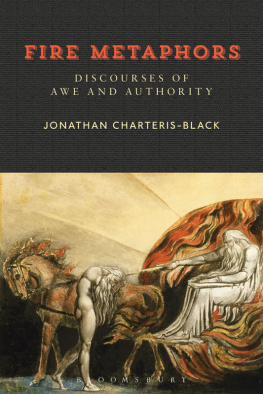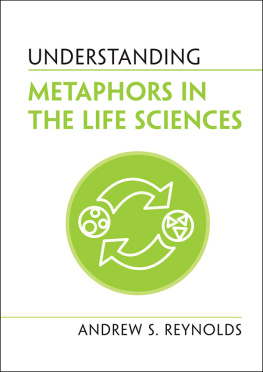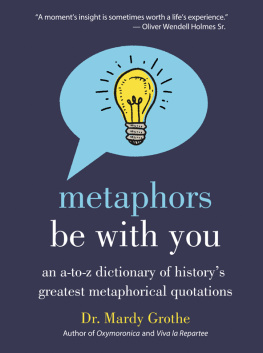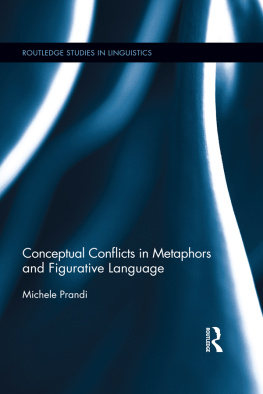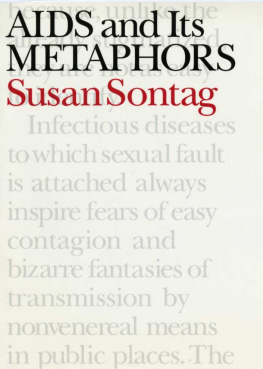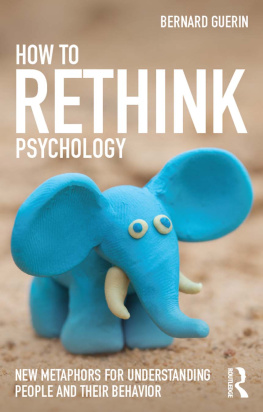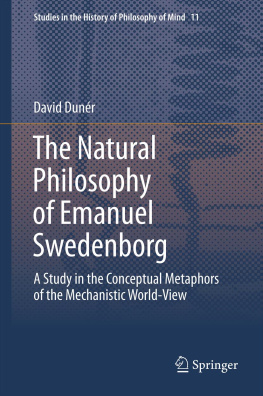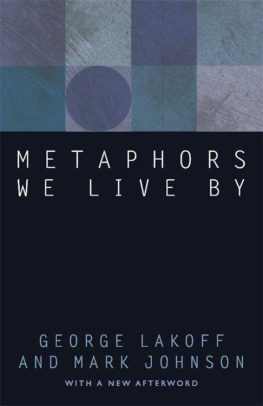MIXED METAPHORS
ALSO AVAILABLE FROM BLOOMSBURY
Political Metaphor Analysis, by Andreas Musolff
More WordCrime, by John Olsson
Linguanomics, by Gabrielle Hogan-Brun
MIXED METAPHORS
Their Use and Abuse
By Karen Sullivan

For my parents,
who were by my side, standing behind me,
every step of the way.
Lightning pirouetted like a drunken ballerina across purpling clouds and a sky the colour of regret.
What makes the ballerina sentence painful to read? Its spelling, grammar, and punctuation are flawless, yet the passage is awkward, unconvincing, and would have no place in a literary classic (though it did manage to be published in a contemporary novel).
The problem with the sentence is its metaphors. First of all, lightning moves in straight or jagged lines and cannot pirouette. Second, most of us havent had the privilege of seeing a ballet dancer perform while drunk, so we may have trouble imagining what this looks like. Finally, we have no way of knowing whether the colour of regret is green, grey, black, or orange. The pirouetting lightning, the ballerina, and the regret-coloured sky make the passage hard to understand.
Compare the ballerina passage with a metaphoric phrase from Sons and Lovers by D. H. Lawrence:
Another old shop whose small window looked like a cunning, half-shut eye.
Weve all seen a half-shut eye and can easily compare this image to the half-closed window of a shop. The shopfront can be understood as a face, and the cunning expression of the eye hints at a secretive, ominous attitude. We immediately suspect that the shop is old and mysterious. Each word in the metaphor conveys imagery and emotional impact.
Both the ballerina and the half-shut eye metaphors have the form of similes. That is, they introduce metaphoric comparisons with the If these words are changed, the ballerina passage is still confusing and the half-shut eye description is still expressive.
In general, the specific words in metaphoric language are less important than the concepts that the metaphors are comparing. Critics often pay attention to metaphoric words instead of concepts, simply because words are easier to identify. Its straightforward to decide that a metaphor includes the word like and therefore is a simile. Its harder to pinpoint whats wrong with lightning that pirouettes or whats interesting about a window that resembles an eye.
Even though metaphoric words are easier to study, metaphoric concepts tell us much more about how metaphors work. Every metaphor has conceptual structure that hides certain facts and forces others to our attention. Well-chosen metaphors help us imagine people who never lived and events that never happened. Metaphors let us think about black holes, authoritarianism, death, and thousands of other things we cant see or touch.
We could say that metaphors allow us to grasp otherwise nameless notions, tackle difficult problems, and move forward in our understanding of the world. Language is full of metaphors once we open our eyes. Yet metaphors are almost imperceptible unless something brings them to our attention. For the most part, we notice metaphors only when they go wrong or when they seem so exceptional that we marvel at what they can do.
English speakers often know intuitively that theres something amiss with a metaphor, like those in the ballerina passage, but cant pinpoint the problem. Many English speakers are happy to call these mixed metaphors even if they cant tell exactly whats wrong with them.a mixed metaphor of this strictly defined type when he complained about a colleague, Hes gone behind my back, right in front of my face! Nobody could be behind Bellamy (as in the first metaphor) and also in front of him (as in the second metaphor), so these two metaphors are contradictory and are mixed in every sense of the term.
For most English speakers, though, the definition of mixed metaphors has been extended to encompass individual metaphors that are simply hard to imagine, like a drunken ballerina, and those that are internally inconsistent, like spinning lightning. These mixed metaphors cause as much trouble as the more traditional kind, so theyll be included in this book along with the metaphors that linguists usually consider mixed.
Human intuitions about metaphors are not limited to whether or not metaphors are mixed. As human beings, we have the ability to use and understand metaphoric language without conscious awareness of the metaphoric concepts involved. There are nevertheless advantages to making ourselves consciously aware of the metaphors around us. If we know how metaphors work on a conceptual level, we can control their effects. We can avoid using metaphors that are confusing or distracting, and we can design metaphors that do exactly what we want. When we encounter metaphoric language, we can analyse what makes it effective or not. We can avoid being manipulated by subconscious metaphors, and we can accept the benefits of a metaphor while rejecting any aspects we find unhelpful or inaccurate.
Its only recently that the conceptual underpinnings of metaphoric language have been recognized at all. From Aristotles time until the last decades of the twentieth century, metaphor was generally considered a poetic embellishment rather than an essential part of everyday cognition. In 1980, the linguist George Lakoff and the philosopher Mark Johnson published Metaphors We Live By, a book that changed how many people think about metaphor. Lakoff and Johnson showed that metaphor pervades all language use, not just poetry or literature. Most metaphors, they argued, are so effortless and natural that we use them all the time without noticing. We dont usually think of everyday sentences such as Im planning ahead as metaphoric. However, its apparent that the word ahead is not strictly literal in this sentence, because the future that were planning for isnt physically ahead of us. Lakoff and Johnson argue that examples such as Im planning ahead are metaphoric, even though theyre less noticeable than some of the clever, original metaphors found in poetry. Today, there is disagreement over which words and phrases but even conservative metaphor researchers agree that metaphors occur in everyday language as well as literary language.
Lakoff and Johnson also found that metaphor is anything but superficial embellishment. Metaphors are primarily ways of thinking, not ways of speaking. When we use metaphoric language, it activates complex cognitive (i.e. thought-based) structures called conceptual metaphors. This is what gives metaphoric language its power. For instance, when we say that we see what someone means, that their meaning is clear to us, or that their explanation sheds light on a topic, we use words and phrases related to vision, such as see, clear, or shed light, to talk about the comprehension of ideas. According to Lakoff and Johnson, we use words related to vision because we actually think about comprehension in terms of vision. The concepts of vision and comprehension are cognitively connected. The next chapter introduces further evidence for conceptual associations of this kind and describes how these connections affect human language and thought.
If metaphors are conceptual structures, this helps explain why they are sometimes used in ways that can seem confusing or awkward, such as in mixed metaphors. Conceptual metaphors, according to Lakoff and Johnson, are mostly subconscious and unintentional. Since were not consciously aware of most of our metaphors, we sometimes use them in ways that wont make sense to other people. We might, for example, say that we see what someone is saying, see that a dog is smelly and needs a bath, or otherwise claim to see attributes that are actually perceived by other senses. Usually, audiences will understand even an imperfect metaphor. Our listeners wont be confused if we say we see that a fabric feels soft or see how a concerto is structured. Using this wording does, however, suggest that were not paying attention to our choice of metaphors, and it may distract a listener from the point were trying to make.
Next page


